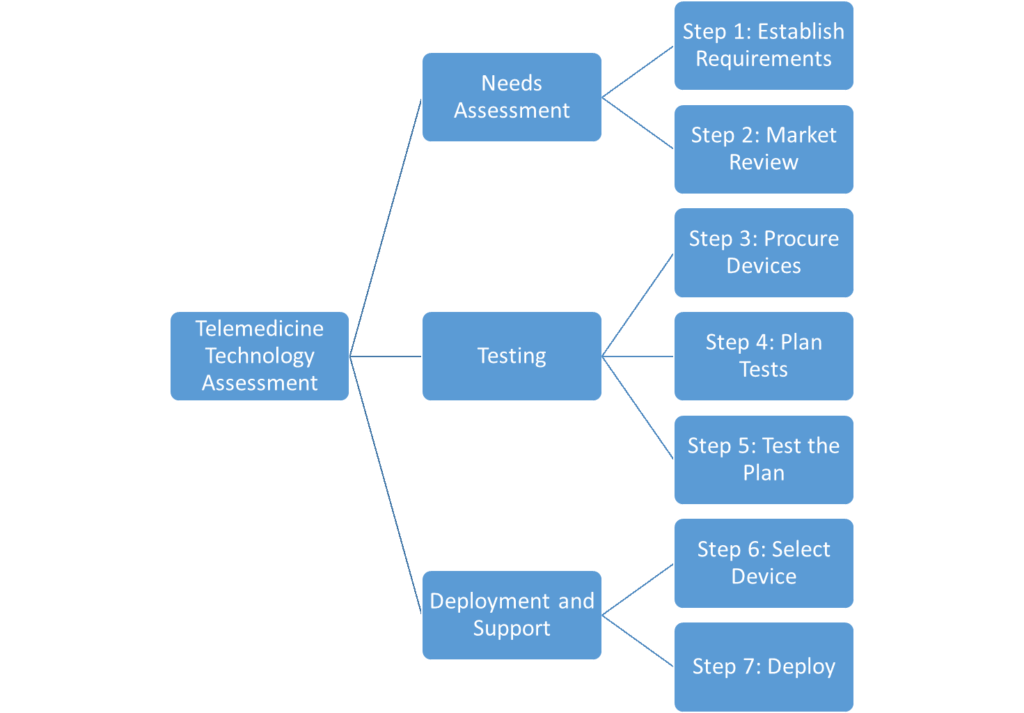This toolkit overviews the common steps in evaluating technology for your program, as well as best practices for gathering and documenting data during the assessment process.
Technology Assessment 101


This toolkit overviews the common steps in evaluating technology for your program, as well as best practices for gathering and documenting data during the assessment process.
In this section you will find links to each manufacturer’s website and all of the product documentation that TTAC obtained throughout the course of our technology assessment. Note that the following PDF “Portfolios” must be downloaded and viewed on Adobe Reader; the files cannot be viewed in a web browser. CareTone Website Documentation CME VE […]
Functional Aspects of Electronic Stethoscope Hardware Clinical Evaluation Hardware and Software Cut Sheets When conducting your assessment of the electronic stethoscopes and their accompanying software packages, there are some key functional aspects that should be considered. Theses functional aspects will help you further determine if an electronic stethoscope candidate meets your minimum project requirements. These […]
Introduction Auscultation as a tool for examining patients has been noted in writings as far back as 500 BCE. Physicians originally performed “direct auscultation” by placing their ears directly on the patient’s body to listen to their internal body sounds. The invention of the stethoscope occurred in 1816, when Rene Laennec invented what was essentially […]
The goal of the electronic stethoscope assessment section is to help you identify an electronic stethoscope currently on the market that best meets your programs needs. We include an overview of our process, a description of how we conducted both qualitative and quantitative assessments of the equipment, a list of electronic stethoscope product information sheets, […]
An electronic stethoscope overcomes the low sound levels inherent in the traditional, acoustic models, and allows for live or store-and-forward audio review for telehealth providers. This toolkit looks at the functional aspects of electronic stethoscopes, and covers the process for selecting the device most appropriate to your program’s needs.

Guidelines for imagine a subject’s mole or rash Photo Name: Mole or Rash Subject Positioning: Most everyone has a mole or rash. It is best if you can have a volunteer seated in a reasonably lit room. Have them positioned so there is not a shadow covering the lesion. Room Lighting: Use typical exam room […]
Guidelines for imaging a subject’s fingers or thumb Photo Name: Fingers or Thumb Subject Positioning: Photographer’s subject hand is positioned on a flat color tone (blue, green or grey) piece of paper or cloth. Photographer’s other hand is used to take the picture. Room Lighting: Use typical exam room lighting, such as fluorescent. Do not add lighting from […]
Guidelines for imaging a subject’s hand Photo Name: Hand Subject Positioning: Photographer’s hand is positioned on a medium-flat piece of paper or cloth in blue, green, grey, or white. The photographer’s other hand is used to hold the camera while taking the picture. Room Lighting: Use typical exam room lighting, such as overhead flourescent. Do […]
Guidelines for imaging a subject’s profile Photo Name: Profile Subject Positioning: Have the subject stand facing parallel to a wall Room Lighting: Use a room that has a medium flat or semi-gloss paint in a tone such as blue, green, or grey. Distance Camera to Subject: 2 feet Photographer Tips: Frame the profile from mid-shoulder […]